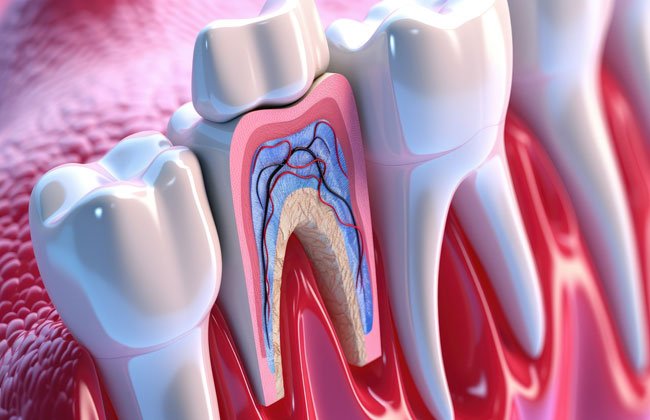
Root Canal Therapy
Root canal treatment is a dental procedure that cures damaged or infected pulp in the tooth’s root canal. Root canal treatment involves drilling a hole into a decayed tooth and cleaning the dental pulp. Dental pulp is made of blood vessels and nerves that provide oxygen, nutrient and feeling to the tooth.
Root canal treatment is recommended on cracked, traumatized, badly decayed, painful or sensitive teeth. Root Canal treatment can also be done on a previously treated tooth due to the following reasons:
- Recurrence of symptoms of Pain
- Infections
- Swelling or Dental Abscess
To find out whether you can achieve greater comfort with root canal treatment please book a consultation with our dentist.
Procedure of Root Canal Treatment
The procedure generally needs to be completed over several visits.

Dental Infection

Opening made in tooth

Removal of infected tissues

Canals filled with rubber like material

Filling placement & optional post

Placement of a dental crown
- The dentist in the first visit will take x-rays of the tooth and the area around it.
- The tooth area will usually be numbed with a local Anaesthesia .
- Your tooth may then be covered with a small rubber sheet that isolates the tooth being treated from the rest of the mouth.
- The dentist will make an opening in the top of the tooth.
- The diseased pulp and bacteria are flushed out with disinfectant and the root canals are cleaned with special instruments.
- The pulp chamber and root canals are filled and sealed.
- The tooth opening is restored with a filling.
- After a root canal treatment, a tooth becomes brittle. It can be strengthened (to stop it from splitting while eating) with a cap or ‘crown’

Benefits of Root Canal Treatment
The most common benefits of the root canal treatment are:
- A better bite and more efficient chewing
- Preserving natural teeth
- Protecting other teeth from wear and tear
It is to be noted that the root canal treatment may not be offered if the tooth is loose or if only a small amount of tooth remains as the treatment is not likely to be successful.